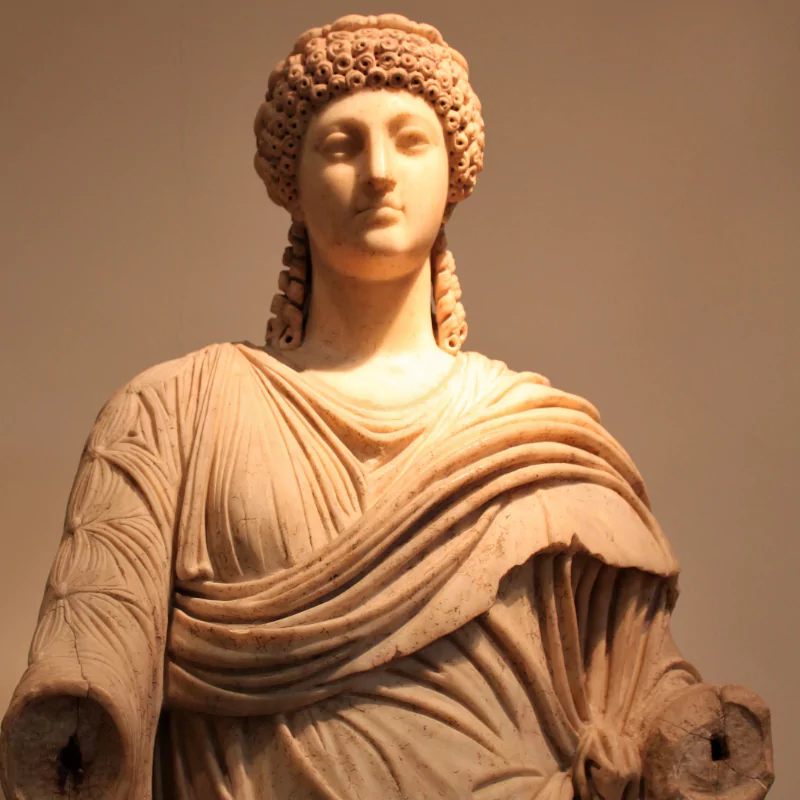Table of Contents
Overview of Art and Sculpture in Olympia
In ancient Olympia, amidst the athletic feats and religious ceremonies, stood masterpieces of art and sculpture that exemplified the artistic excellence of the time. These works were not mere decorations but symbols of religious reverence, cultural identity, and the celebration of human achievement.
The Confluence of Art and Religion
Olympia’s sculptures and artworks were deeply intertwined with its religious and cultural fabric. The statues of gods and heroes, the intricate temple friezes, and the victorious athletes’ statues were all imbued with spiritual significance, serving as offerings to the gods or commemorating legendary feats.
Celebrating Human Form and Achievement
A key characteristic of Olympia’s art was the celebration of the human form. Sculptors sought to capture the idealized beauty, strength, and grace of the human body, reflecting the Greek ideals of harmony, balance, and proportion.
Description of Notable Sculptures and Artists
Olympia was home to some of the most renowned sculptures and artists of ancient Greece, whose works have left an indelible mark on the history of art.
The Statue of Zeus by Phidias
One of the most famous works was the chryselephantine statue of Zeus, crafted by the legendary sculptor Phidias. This colossal statue, one of the Seven Wonders of the Ancient World, depicted Zeus seated on his throne, exuding divine majesty and authority. The statue was not only a religious icon but also a masterpiece of artistic craftsmanship.

Hermes of Praxiteles
Another celebrated work was the statue of Hermes, created by the sculptor Praxiteles. This marble statue, representing Hermes holding the infant Dionysus, was renowned for its exquisite portrayal of the human body and the subtle expression of movement and life.
Techniques and Materials Used
The artists of Olympia employed various techniques and materials to create their masterpieces, showcasing their skill and innovation.
Mastery in Bronze and Marble
Sculptors worked primarily with bronze and marble, materials that allowed for fine detailing and durability. Bronze statues were made using the lost-wax casting method, a complex process that involved creating a clay model, a wax mold, and then casting the bronze. Marble sculptures were carefully carved and often polished to a high finish, highlighting the material’s natural beauty.
The Art of Chryselephantine
The technique of chryselephantine, combining gold and ivory, was used for the most prestigious statues, such as the Statue of Zeus. This method involved creating a wooden frame, which was then overlaid with gold and ivory plates, creating a lifelike and majestic appearance.
Influence on Greek and Global Art
The artistic legacy of Olympia had a profound impact not only on Greek art but also on the broader artistic traditions of the Western world.
Setting Standards in Sculpture
The sculptures of Olympia, with their emphasis on realism, harmony, and idealized forms, set a high standard for artistic excellence. They influenced generations of artists in ancient Greece, becoming models for sculptural representation of the human figure. The techniques and styles developed in Olympia played a key role in the evolution of classical Greek art.
Beyond Greek Borders
The influence of Olympia’s art extended beyond Greek shores, impacting Roman art and, later, Renaissance artists who sought to revive classical ideals. The study of these ancient sculptures contributed to the development of new artistic techniques and styles in Europe, shaping the trajectory of Western art history.
Preservation and Display in Modern Times
The artworks and sculptures of Olympia have endured the test of time, thanks to ongoing preservation efforts and archaeological discoveries.
Archaeological Excavations and Discoveries
Archaeological excavations in Olympia have unearthed numerous sculptures and artifacts, providing invaluable insights into ancient Greek art. These findings have helped reconstruct the artistic landscape of Olympia, offering a glimpse into the past’s artistic practices and cultural expressions.
Museums and Collections
Many of the discovered sculptures and artworks are now housed in museums, such as the Archaeological Museum of Olympia. These institutions play a crucial role in preserving and showcasing Olympia’s artistic heritage, allowing people from around the world to witness the masterpieces of ancient Greek art.
Conservation Challenges
Preserving these ancient artworks poses significant challenges. Exposure to environmental elements, the passage of time, and past restoration attempts have all impacted the condition of these sculptures. Conservationists and historians work tirelessly to preserve these treasures for future generations, employing advanced techniques to restore and protect them.
Conclusion
The art and sculpture of Olympia stand as a testament to the artistic vision and skill of ancient Greek craftsmen. These works, celebrating the divine, the human, and the heroic, have left an indelible mark on the history of art. Today, they continue to inspire awe and admiration, bridging the ancient and modern worlds and reminding us of humanity’s enduring quest for beauty and expression.

